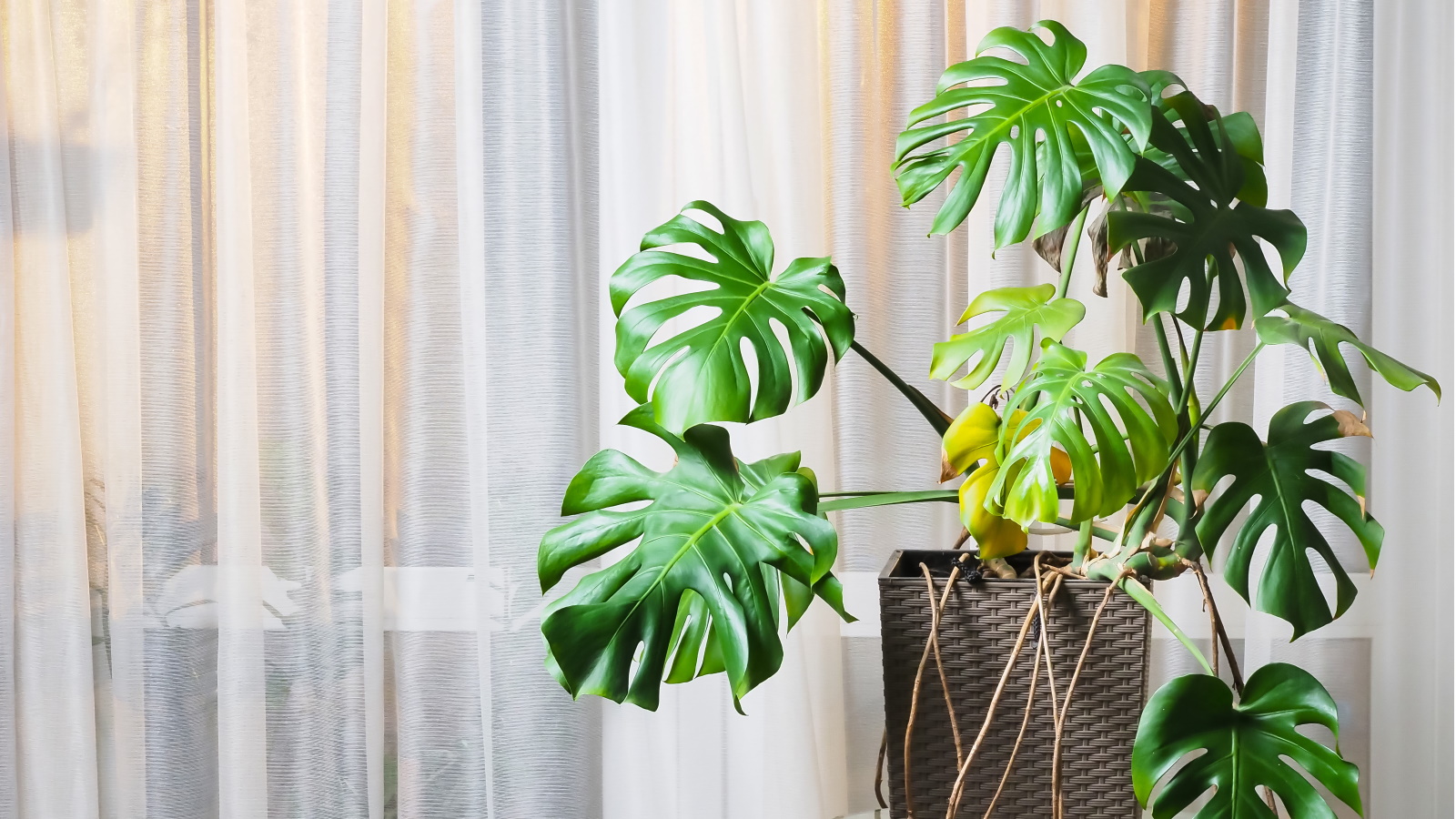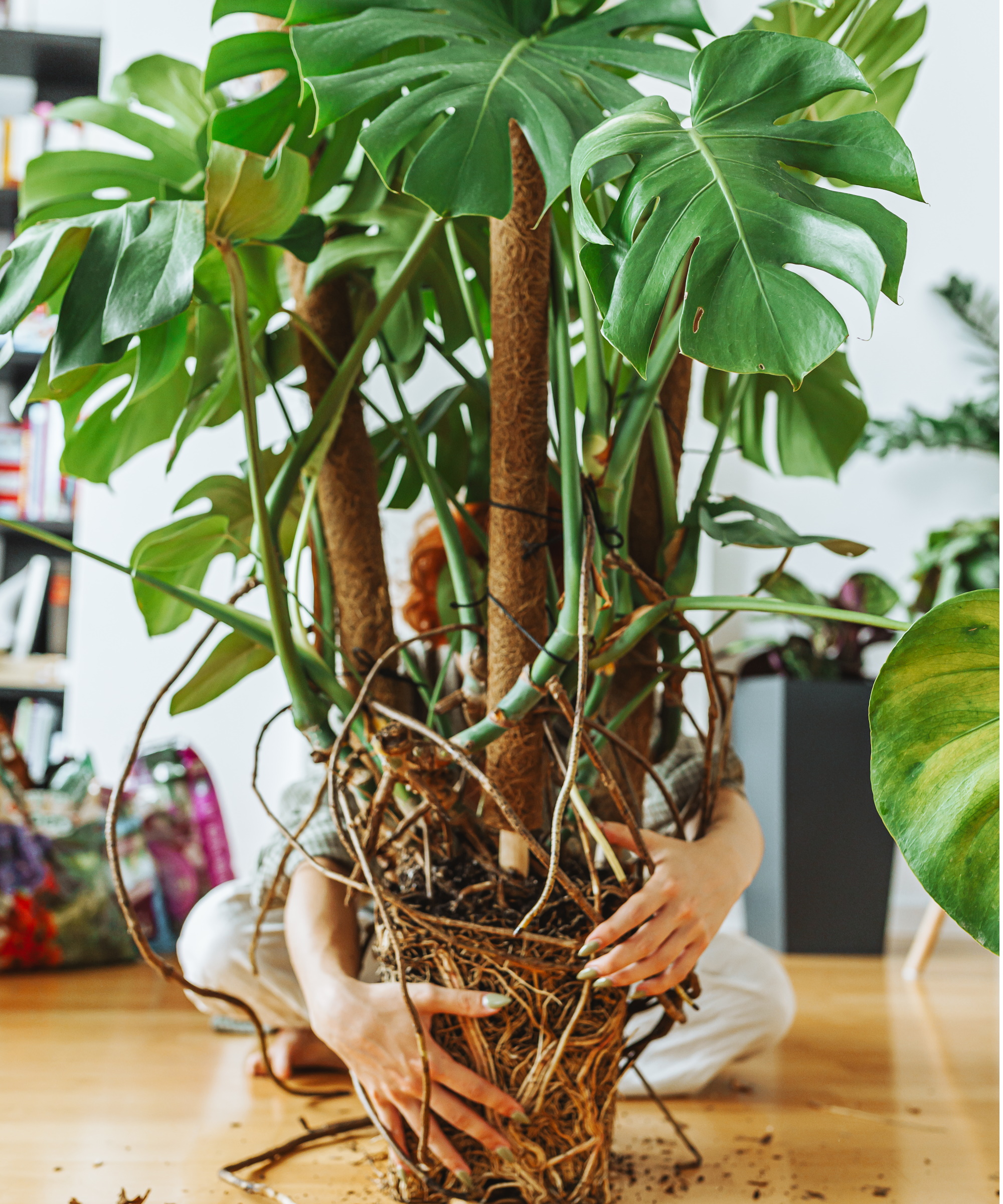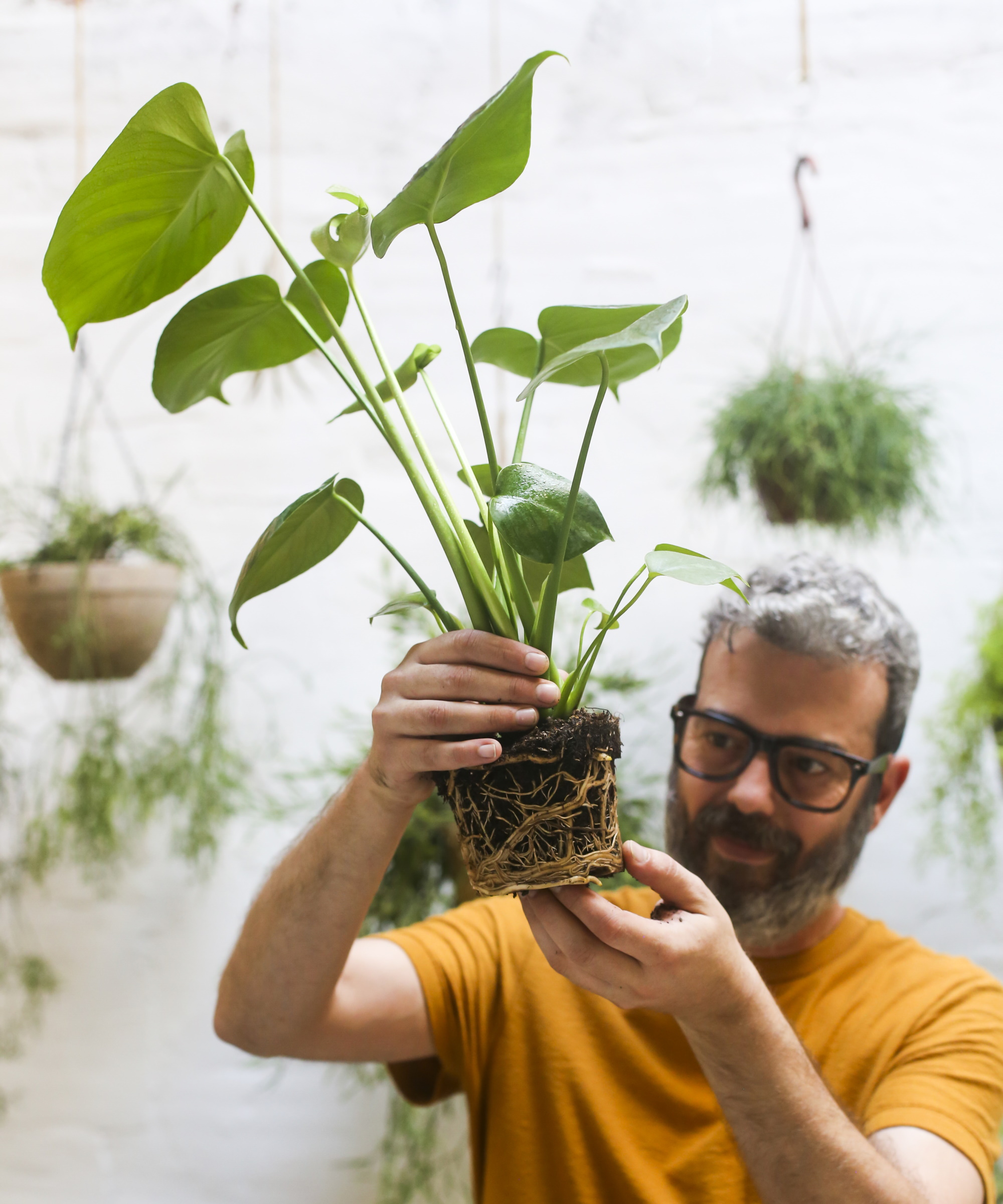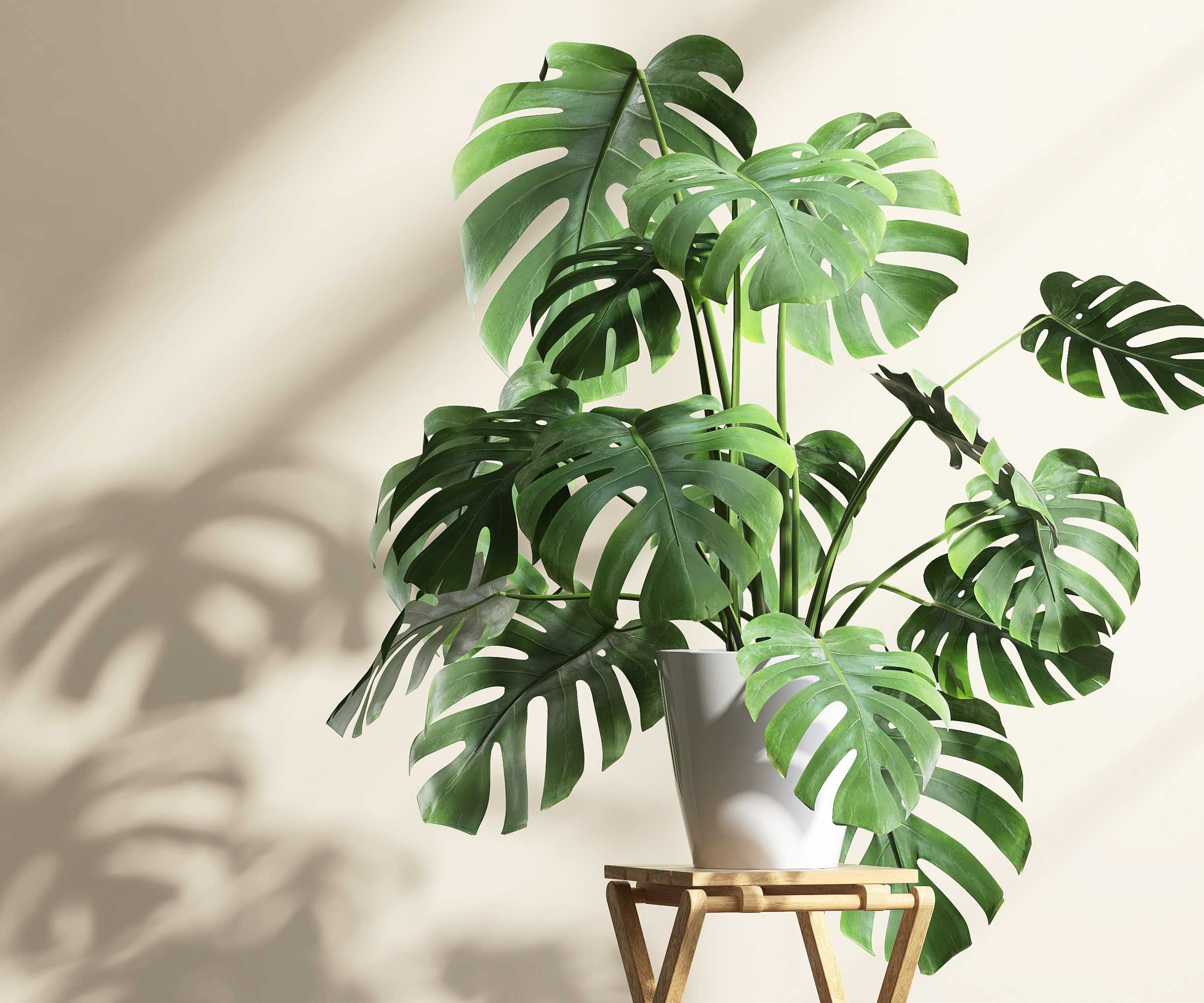Do monsteras like being root-bound? Expert advice on keeping this statement houseplant happy
Not accommodating your monstera's growth may hinder its health long-term


My Monstera deliciosa still remains one of my favorite houseplants in my collection. When I first bought it a couple of years ago, it was just two feet tall and has now doubled in size. I made the mistake of not repotting my monstera until earlier this year and found that it had become slightly root-bound and stuck in its pot.
While its a usually an indoor plant mistake to let your houseplants become root-bound, I noticed that my monstera wasn't necessarily suffering from living in the tight quarters of a small pot. Although, some monstera leaves were starting to turn yellow, indicating that it wasn't going to cope with a lack of growing room for much longer.
So, how much do monsteras like being root-bound? While these plants are quite hardy and can get on with a smaller pot for some time, you shouldn't allow them to become severely root-bound. Here's everything you need to know.

Do monsteras like being root-bound?
Monsteras are tropical indoor plants that, like orchids, have aerial roots as well as roots that grow in soil. You might notice these aerial roots grow from the stems of your monstera where they are exposed to air. However, the roots that sit beneath the surface of soil require nutrients from a rich potting mix. That's why it's important to repot your monstera as it becomes larger, so the roots can continue growing. But how long will a monstera stay happy as a root-bound plant?
What happens when a monstera becomes root-bound?

'Root-bound' refers to when a potted plant's roots have formed a dense, tangled mass that prevents further growth. It happens when a plant is growing too large for its pot and is also referred to a plant becoming 'pot-bound.'
'Monsteras like to be slightly root-bound and this is a good general rule for most indoor plants,' says Raffaele Di Lallo, plant expert from Ohio Tropics. 'But it would be best not to allow your plant to get severely root-bound.
'The more root-bound a plant gets, the more quickly the potting mix will dry out and you may reach a point where it will be difficult to keep your plant hydrated,' he adds.
Design expertise in your inbox – from inspiring decorating ideas and beautiful celebrity homes to practical gardening advice and shopping round-ups.
As a result of your monstera not receiving sufficient moisture, you may notice discolouring leaves and your monstera drooping, as well as a lack of new growth.
I find this soil moisture meter from Amazon useful for indicating whether my monstera has sufficient moisture or needs topping up. If your monstera is drying out more quickly than before, it might be a sign that it is becoming root-bound.

Raffaele Di Lallo is the founder of the blog Ohio Tropics which focuses on the care of houseplants and other tropical plants, both indoors and outdoors. He has a large following on Instagram where he gives plant care tips and is the author of Houseplant Warrior: 7 Keys to Unlocking the Mysteries of Houseplant Care, published by Countryman Press.
When should you repot a monstera?

While monsteras can cope with being somewhat root-bound, it's not good for their health to become severely root-bound. You should aim to repot your monstera before this occurs.
'I recommend looking at the drainage hole at the bottom of your pot. If there are visible roots, or you see them coming out of the holes, it is time for a new pot,' says Raffaele. 'When you take the plant out of its pot, it should come out in one piece,' he adds.
If you attempt to repot your monstera but it's difficult to get out of the pot, you may need to prune your houseplant roots to get the monstera out of the pot. Using these gardening scissors from Amazon can help get the job done.
Likewise, gently twisting your monstera can help loosen and remove it. 'Hold the pot with one hand, and grasp the plant at the base, and gently pull it out. If you have a rigid pot, I like to use a thin tool like an old knife and pass it along the perimeter of the interior of the pot to loosen things up,' says Raffaele.
FAQs
How big should a new monstera pot be?
It's important to get your pot size right for your houseplants to ensure they have sufficient room to grow and don't become root-bound. Monsteras are large plants and therefore require bigger pots.
'When it is time to repot, my general rule of thumb is to go up one pot size only. So if your plant is in a six-inch diameter pot, when you repot, go up to an eight-inch diameter pot,' advises Raffaele Di Lallo, plant expert from Ohio Tropics. 'You can even get away with two pot sizes higher, as long as your plant is getting enough light and your potting mix is very well drained and porous,' he says.
It's important to not place your monstera in a pot too large, as it can cause the potting mix to take too much time to dry out and lead to houseplant root rot and fungus gnats, among other problems.
As well as making sure your monstera pot is large enough, it can be a good idea to give your monstera a home in a ceramic pot, like this stoneware planter from Amazon, to keep it in a sturdy position as these large plants can be top-heavy. You might find occasional monstera pruning helps to keep it shapely and neat in your home.

Tenielle is a Gardens Content Editor at Homes & Gardens. She holds a qualification in MA Magazine Journalism and has over six years of journalistic experience. Before coming to Homes & Gardens, Tenielle was in the editorial department at the Royal Horticultural Society and worked on The Garden magazine. As our in-house houseplant expert, Tenielle writes on a range of solutions to houseplant problems, as well as other 'how to' guides, inspiring garden projects, and the latest gardening news. When she isn't writing, Tenielle can be found propagating her ever-growing collection of indoor plants, helping others overcome common houseplant pests and diseases, volunteering at a local gardening club, and attending gardening workshops, like a composting masterclass.